
—
Can’t they just ban everything dangerous?
—
A colleague in the industry that I spoke to the other day said when we discussed spraying the vineyards, “Can’t they just ban everything dangerous?” Yes, that sounds like a good idea, in theory. But in practice?

Most products that are “dangerous” are used precisely because they are dangerous. A pesticide that is not dangerous is ineffective. The question is how dangerous it is and for whom and for what.
So how to define dangerous?
If you have zero tolerance for “dangerous” as a goal, i.e., not to allow anything that has the slightest impact on people, animals and the environment, well, then viticulture, and agriculture in general, is in for a hard time. If the wine producer does not treat against, e.g. fungal diseases, they would in some years lose large parts of their harvest. That is why, in practice, there are no wineries that entirely refrain from spraying.
Diseases and pests exist, and they need to be controlled. To be effective, the pesticide needs to be at least a little bit toxic. So, in addition to killing the pest, the fungal disease or whatever it is, there will be collateral damage. Microorganisms in the soil, bees, groundwater, earthworms etc., can be adversely affected. The trick is to keep the collateral damage at an, as the EU says, “acceptable level”.
Even pesticides classified as carcinogenic (CMR) would not be considered (unacceptably) dangerous by all people. Some (and not just those who manufacture them) claim that if you follow the regulations on protective clothing and how to handle the product, they are not unacceptably dangerous.
It becomes even more complicated when researchers disagree. We saw this in the debate a few years ago about glyphosate, the active ingredient in many herbicides, e.g. Round-Up. Researchers hired by various authorities disagreed on the danger. In the midst of it all, France was well on its way to ban glyphosate altogether but, in the end, just restricted the use. Today, the tendency is to accept it more.
Not even the products allowed in organic farming are exempt from conflicts. Most organic producers (and many conventional ones) are fond of copper – which they use against mildiou. They could not do without. Some are a little worried about possible environmental damage, but they consider the alternatives – synthetic products – much worse.
But copper is on EU’s list of “substances that should be replaced”, and that must be re-evaluated and have a new permit every seven years, instead of 10 years for other substances. The next time is 2025. The threat of a ban hangs over organic farming.
But there is probably no reason to worry. An alternative to copper is far away, and the EU has no intention of pulling the rug out from under the booming organic wine industry. If you ban copper, that’s precisely what you do. In addition, scientists are far from agreeing on the “danger” of copper.
The EU has its agenda, and politicians have theirs. Researchers may be associated with one side or the other. Manufacturers want to sell their products. And consumers are more or less well-informed about the issues.
How to define dangerous is difficult. To decide who should define it is even more difficult.
Read about the world of wine
In this Brief, you will find a lot to read about the world of wine: how much wine is produced in the whole world? Which are the biggest wine-producing countries? Who drinks the most wine? How large yields do they have? (And is it good or bad with large yields?)
Statistics are fascinating. Take a look at the numbers. Did you know, for example, that of all the countries that are not “wine-producing countries”, Sweden (yes, we’re Swedish) is the one where they drink the most wine per capita?
But there is much more to read in the Brief as well.
Wine tours
Do take a good look at our wine tour program. We have exciting wine tours planned for 2022 (and 2023).
You are probably as eager as we are to get out in the vineyards?
Travel to the wine regions with an experienced and knowledgeable wine tour operator. You know who.
If you want to discover the best in the wine regions and get some unforgettable memories, travel with one of the most experienced and most knowledgeable wine tour operators.
More info on our wine tours here.
Enjoy the Brief!
Britt & Per
If you appreciate what we do, you can help us:Tell your friends about the Brief or send it to them.
Like us and follow us on social media:
BKWine Magazine on Facebook | Wine Tours on Facebook
Twitter | Instagram | Linkedin | YouTube
What’s on at BKWine Tours
BKWine is also one of the world’s leading wine tour operators. Here’s what we currently have on our scheduled wine tour program:
- Bordeaux, April 20-24, 2022
- Champagne, May 4-8, 2022
- Bordeaux and Champagne, Sept 28 – Oct 6, 2022
- Champagne, Sept 28 – Oct 2, 2022
- Bordeaux, October 2-6, 2022
- Chile-Argentina, January 16-29, 2023
- South Africa, February 8-18, 2023
- New Zealand, March 15-30, 2023
We also make custom designed wine tours.
We’re different than most other wine tour operators. We are people who know wine inside out, who travel constantly in wine regions, who write award winning books about wine. Who do this out of passion.
Our wine tours are different from others.
More in wine tours: BKWineTours.com.
A typical year we organise more than 30 wine tours to destinations across the world. In Europe: France, Italy, Spain, Portugal and more. World-wide: South Africa, Chile, Argentina, New Zealand. Thanks to our Scandinavian background we have a separate offer for the Scandinavian market. These are sometimes offered in English and also available as custom made tours. For example, these destinations:
Read our books
We have written eleven wine books. They have won awards from the Gourmand Awards, The International Organisation of Vine and Wine (OIV) and others.
Unfortunately, only one of them has been translated to English; the others are (so far) only available in Swedish. This is the one that is available in English:
Here’s the full list of our books:
- The Wonderful World of Wine
- Languedoc-Roussillon, the Wines of Southern France
- Champagne, the Wine and the Growers
—
News from the World of Wine
Short briefs on what’s been happening in the world of wine recently and other interesting things.
AOP Côtes de Bourg requires environmental certification, but not just anyone
It will probably become common in the future for an appellation to require all their producers to have some sustainability label. AOP Côtes de Bourg in Bordeaux wants to go one step further. Here they want to specify that the producers must be certified Haute Valeur Environnementale (HVE), the sustainability label of the French Ministry of Agriculture.
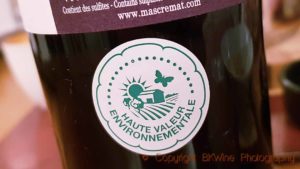
This has not gone down well with the organic producers in the appellation. And they are many, over 30%. They have a hard time accepting that they need additional certification. Riku Väänänen, producer in Côtes de Bourg at Château Puybarbe, tells BKWine Magazine that he does not think it is possible for an appellation, let alone a national body like INAO (which must approve the rules), to prioritize one label over another. “The AOP now waits to hear back from the national bodies to see what will be their recommendation on how far an appellation can go (if the vote is democratic) and how to let each valued certification co-live and still taking all the producers further in the right direction of more sustainable viticulture.”
Travel: Come on a wine tour to Bordeaux with BKWine.
Champagne sells 322 million bottles in 2021, at a record price
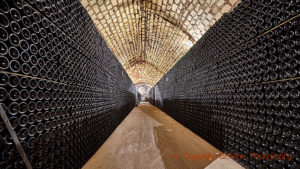 No one had dared to hope for such high sales figures. In 2021, Champagne sold 322 million bottles. An excellent result and an increase from 2020 by 32%, which was admittedly the worst year in a long time, and an increase by almost 8% from 2019. 322 bottles are not a record in volume – 2007 still holds that with 338 million bottles sold – but a record in value, 5.5 billion euros.
No one had dared to hope for such high sales figures. In 2021, Champagne sold 322 million bottles. An excellent result and an increase from 2020 by 32%, which was admittedly the worst year in a long time, and an increase by almost 8% from 2019. 322 bottles are not a record in volume – 2007 still holds that with 338 million bottles sold – but a record in value, 5.5 billion euros.
The record turnover is probably due to do with the producers’ talent for getting high prices for their bottles, rather than some “wine shortage”. The stocks are hardly depleted. 2019 and 2020 were two years of weak sales, after a series of years with sluggish sales. In 2020, Champagne even made the drastic decision to sharply limit harvest yields in an attempt to keep prices up, despite both high quantity and quality of grapes. Much excellent fruit was thrown to the birds.
The gap between the French market and the export market has widened. In 2021, 142 million bottles remained in France, while exports soared to 180 million. 2018 was the first year that the export market surpassed the domestic one. Read more: champagne.
Travel: Come on a wine tour to Champagne with BKWine.
Prosecco breaks new, unimaginable records, 700 million bottles
There is no stopping Prosecco’s popularity. In 2021, 627.5 million bottles of Prosecco DOC were bottled (and, presumably, sold). Of this amount, 71.5 million bottles are rosé, a category created in 2020. Prosecco is, without a doubt, the most consumed bubbly wine in the world.
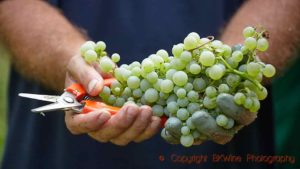
Not bad for a DOC that has been in existence for just over ten years. Prosecco DOCG is not included in these statistics. We don’t have a current number for the DOCGs but a guesstimate is around 100 million bottles. This means that total prosecco sales would exceed 700 million bottles.
A prosecco is seldom totally dry (in the real sense of the word). The majority of the wines, 66.2%, are extra dry, which in bubble language means between 12 and 17 grams of sugar. 24.9% are brut, 0.3% extra brut and 0.2% brut nature. The sweeter categories, dry (17–32 grams of sugar) and demi-sec (32–50 grams), account for 8.1 and 0.3%, respectively. The grapes for Prosecco DOC are grown on approximately 24,000 hectares (compared with Champagne’s 34,000). In other words, the harvest yield is big. Read more: EfaNews (pdf).
Château Angélus refrains from being classified in Saint Emilion
Château Angélus has chosen not to be included in the 2022 update of the Saint Emilion classification. This announcement comes a few months after two other A-chateaux dropped out, Cheval Blanc and Ausone. Angélus, together with Château Pavie, reached the highest level, premier grand cru classé A, at the update in 2006 (and approved in 2012).
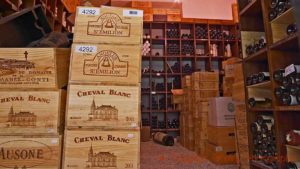
But this will not mean the end of the classification. Whatever reasons the three chateaux state for leaving, the bottom line is that they are so well known that they do not have to be classified. It is not uncommon for famous producers to refrain from classifications and wine competitions.
Look at the cru bourgeois classification in Médoc (albeit a classification with a lower status factor than the one in Saint Emilion). Here, several top chateaux choose not to be involved, such as Phelan Ségur, Chasse-Spleen, Fourcas-Hosten and Rolland de By. As to wine competitions, those already known do not need a medal. Classifications are primarily a marketing tool. Participating can even be a disadvantage if they do not end up in the top group or do not win a great gold medal. And with blind tastings, you never know. Read more on the value of classifications and about their foundations.
Travel: Come on a wine tour to Bordeaux with BKWine.
Now you can buy Swedish wine online across Europe
Swedes are not allowed to buy wine directly from wineries popping up here and there in the southern part of the country. A proposal to allow it (with plenty of restrictions still, mind you, state monopoly oblige) will probably be discussed in the parliament this year.
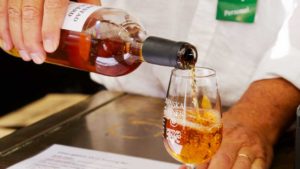
But if you live outside Sweden, you can now buy Swedish wines through Nordic Vineyards, an online wine store. (Not legal for residents in Sweden though.) These are the wineries represented: Skeppards Vingård, Flyinge, Särtshöga, Lottenlund, Arilds, Vingården i Klagshamn, Kullabergs, Frillestads, Flädie, Åhus, Snårestad and Köpingsbergs Vingård. The website gives you a presentation of the vineyards, the history of Swedish wine, and information about some grape varieties used in the Swedish vineyards. Nordic Vineyards currently sells to Spain, Germany, Luxembourg, Italy, Portugal, Cyprus and France. One Swede who is happy to offer his foreign guests Swedish wines is the Swedish ambassador in Paris, Håkan Åkesson who told me last week that he always serves at least one Swedish wine at dinners. Here’s the shop NordicVineyards.
Icewine in Germany pleases growers throughout the country
Making icewine in Germany is hard work in freezing temperatures, which results in only a few drops of wine. But it is worth it, and that is the reason for the happy faces when almost all 13 German wine regions had ideal conditions for picking frozen grapes the week before Christmas. Because these conditions don’t happen every year.

The grapes must be totally frozen, which means a temperature of at least 7 degrees C below zero for several hours. Otherwise, the producer will just lose the grapes. But when it happens, the grapes are harvested, quite overripe at this point, and pressed while still frozen. They often pick early in the morning. The result is a sweet wine with magnificent freshness. Expensive to buy? Not if you consider that the harvest yield is between 300 and 500 litres per hectare. Read more: DeutscheWeine.
8 new grape varieties approved in France
New grape varieties are regularly approved in France. First, they are preliminarily approved for a few years and then they are entered in the official French grape vine catalogue. Recently, these 8 grapes were enrolled, thanks to one or more of their properties.
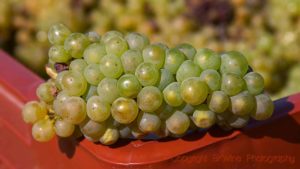
These days it is often about resistance to diseases (to reduce spraying) or climate change.
- Cualtacciu, white grape from Corsica, interesting especially for blends due to its high acidity.
- Felen, white grape from the French Southwest, well adapted to warm climates and with a good acidity.
- Fleurtai, white, Italian hybrid, can withstand harsh winters, resistant to mildiou.
- Rossula bianca, white grape from southern Corsica with good resistance to mildiou, oidium and grey rot.
- Uva biancona, white grape from Corsica that gives naturally low alcohol content and a high acidity.
- Vintaghju, red grape from Corsica, gives wines with good acidity, tannin and coulor.
- Xarello, one of the white cava grapes in Catalonia, well adapted to a Mediterranean climate and drought.
- Brustianu, a white grape from southern Corsica, expressive with honey, anise and citrus aromas, suitable for blends.
Read more: LeigFrance.
Domaine Clos Saint Louis in Fixin, quality in Côte de Nuits Burgundy quality without the hype
Côte de Nuits, the northern part of Côte d’Or in Burgundy, is dotted with wine villages, some more famous than others. One of the not so famous ones is Fixin (the x is pronounced “ss”), just north of Gevrey-Chambertin. Being not so famous is an advantage, at least for the wine lover looking for reasonable priced wines (not that easy to find in Côte de Nuits).

In December, the wine monopoly in Sweden launched a Fixin from Domaine du Clos St. Louis and we take that as an excuse to tell you about their delicious wines. This is a producer that we often visit on our tours in Burgundy. It is run by Philippe Bernard, his wife Martine (an excellent chef) and their daughter Virginie. They work with 19 hectares. During our visits, Philippe is always happy to show us how he works in the vineyard and he is keen to point out how important the weather is for a winemaker. “We live with the weather,” he says. “Every year is different and it is important to make good wine with the conditions you have right now.” So, be on the lookout for the excellent Fixin wines from Clos Saint Louis, for instance one of my favourites, Fixin 2017 L’Olivier (23 euro) or the white Fixin Les Treuilles, a rarity in Côte de Nuits (23 euro). More on the domaine: ClosStLouis.
Travel: Come on a wine tour to Burgundy with BKWine.
—
Features of the Month
Articles and features published on BKWine Magazine and on our wine travel blog and photography blog in the last month.
A Piedmontese secret: timorasso, from Cantine Bottazzi | Britt on Forbes
Not so long ago, we discovered timorasso, an Italian white grape variety in Piedmont. Since then, we have tasted a fair number of timorasso wines, most recently from Cantine Bottazzi. We believe that this grape is among the most exciting white varieties that exist in Italy and indeed in the world.

The timorasso wines from DOC Colli Tortonesi in Piedmont are definitely among the best white wines of Italy.
Read more in Britt’s article on BKWine Magazine, originally published on Forbes: Timorasso wines from Cantine Bottazzi in Piedmont: Winemaker Carlo Lorenzo Bottazzi shares some secrets | Britt on Forbes.
The World’s vineyard surface in 2020, an analysis | Per on Forbes
The biggest vine-growing countries in the world. The world’s vineyard acreage (the planted surface area) has been slowly declining for several years. 2020 was no different; the vineyard plantings declined, but only slightly.

There are now 7.3 million hectares of vineyards, of which, according to our estimates three quarters are dedicated to producing wine. The five biggest countries account for half of the surface. France regains the second place this year. Read on to see all the details.
Read more in Per’s article on BKWine Magazine, originally published on Forbes: The World’s vineyard surface in 2020 and the split by country, an analysis | Per on Forbes.
Travel: Come on a wine tour and explore the world’s vineyards with BKWine.
Global wine production 2020, in-depth | Per on Forbes
In 2020 the world’s wine production increased a little to reach 260 million hectolitres. This is slightly below the long term average. Italy is still the biggest wine producing country, followed by France and Spain. The harvest was both abundant and of excellent quality in Europe.

But production was artificially depressed due to political reasons, but was still up. In the rest of the world many countries saw a decline in wine production, including in China.
Read more in Per’s article on BKWine Magazine, originally published on Forbes: Global wine production 2020, and by country, in-depth | Per on Forbes.
Travel: Come on a wine tour and explore the world’s vineyards with BKWine.
How important is wine production to a country? An international ranking
Ideally, one would look at the value of the wine production. But those figures are very hard to find (if they exist). Instead we look at the total production. 3.4 litres per person. That’s how much wine is made in the world. A back-of-the-envelope calculation of how much wine is made per person in the major wine producing countries can give us a rough proxy for how important wine is for a country’s economy.

Spain, Italy and France are, unsurprisingly, on the top of that ranking as the countries where wine production is most important to the economy. More surprising is perhaps that the fourth country on the list is New Zealand. Equally surprising is (perhaps) that Germany is far down the list. Here’s the full analysis.
Read more in Per’s article on BKWine Magazine: How important is wine production to a country? An international ranking.
“The Wonderful World of Wine – the perfect choice to learn about wine” | book review
“Are you interested in wine and want to learn more but do not know where to start? Then ‘The Wonderful World of Wine’ is the perfect choice for you.” It cannot be better than that, can it?

This is how the review on Vinbanken of our latest book begins. But with its 360 pages, the book is also perfect for those who have already come a long way on the path of learning about wine. It’s full of updated facts.
Read more in Per’s article on BKWine Magazine: “The Wonderful World of Wine – the perfect choice to learn about wine”.
Which are the world’s most productive wine countries? Yields and productivity | Per on Forbes
How much output you get from a certain input is what we usually call productivity. In the wine industry we usually talk about yields, often in hectolitres per hectare. This article explores the productivity/yields in the wine industry in 2020.

Which are the countries that have the highest yields, i.e. gets the most grapes – and thus wine – per vineyard acreage? We get some surprising answers. And we also get a good illustration of that high yields are not necessarily a sign of simple wine. We also explore some of the factors that have an influence on the yields. Join us in this fun number-crunching exercise.
Read more in Per’s article on BKWine Magazine, originally published on Forbes: Which are the world’s most productive wine producing countries? Yields and productivity by country in 2020 | Per on Forbes.
Travel: Come on a wine tour and explore the world’s vineyards with BKWine.
World wine consumption in 2020 | Per on Forbes
How much wine did we drink in 2020? Much more due to covid? Which are the countries that drink the most wine? Or rephrasing: which are the biggest markets for wine in the world? The total world consumption of wine decreased slightly in 2020 to reach 234 Mhl, a drop of 3%. This is most likely an effect of the covid catastrophe that hit the world.

But it is also the third year in a row with shrinking consumption. The biggest wine market remains the USA, followed by France and Italy. However, well over half of all wine is consumed in Europe. In the following article, we will look at consumption per capita.
Read more in Per’s article on BKWine Magazine, originally published on Forbes: World wine consumption in 2020 and the countries that drink the most | Per on Forbes.
Top-quality wines from the oldest producer in the northern Rhône Valley | Britt on Forbes
The Rhône Valley is one of France’s great wine regions. The red wines dominate, but the white ones should not be ignored. There are many small growers in the Rhone region. But the Rhône Valley also has some bigger producers who have been influential in bringing Rhône Valley wines out into the world.

We recently tasted a wide range of wines from one of them, Maison Vidal Fleury, the oldest house in the northern Rhône. We discussed the wines with Antoine Dupré, an oenologist and the general manager since January 2021. Read about the house and about the wines.
Read more in Britt’s article on BKWine Magazine, originally published on Forbes: The oldest winery of the northern Rhône: Vidal Fleury, more than “just” Côte Rôtie | Britt on Forbes.
Travel: Come on a wine tour to the Rhône Valley with BKWine.
Great wines from a small appellation, Bandol in Provence | Britt on Forbes
We are still in the peak of summer, even though the calendar says September 4th. Bandol, a small appellation in Provence, shows itself from its most magnificent side. The grapes are ripe. The harvest has just begun. There’s bustling activity inside the cellars of Domaine la Suffrène.

Suffrène is one of the leading wine producers in Bandol in Provence in southern France. They make some outstanding wines.
Read more in Britt’s article on BKWine Magazine, originally published on Forbes: Bandol, big wines from a small Provence appellation, meet Cédric Gravier at Domaine la Suffrène | Britt on Forbes.
Travel: Come on a wine tour to Provence and the southern Rhône Valley with BKWine.
The countries with the highest wine consumption per person in 2020
Big countries drink a lot of wine, but which nations are the most enthusiastic wine drinkers? In other words: how much wine is consumed in a country per person. In the previous article, I looked at total wine consumption; here, I will dive into the statistics on wine consumption per capita. The most enthusiastic wine drinkers are traditional wine-producing countries.

France and Italy are high up on the list of drinking the most wine per person. But the number one spot, drinking most wine per person, is taken by Portugal, with 52 litres of wine per person and year. The numbers also reveal that there are some wine-producing countries that seem not to like their own products very much, drinking little of it. And other countries making no wine but that drink lots of it. Read on!
Read more in Per’s article on BKWine Magazine: The countries with the highest wine consumption per person in 2020.
What does ”grand cru” on a bottle of champagne really mean? | Per on Forbes
Don’t be fooled by “grand cru” on a champagne bottle. Grand cru and premier cru are famous words. You see them on many champagne bottles. Probably, most people take it as a sign that the wine inside is of better quality. Is that true? Not necessarily. In Champagne, these denominations were created mainly as a tool for price-fixing.

Today, grand cru and premier cru has no official value; it is not an official quality indication, nor a classification. It is a historical mention that is still tolerated. To find the best quality champagne, you should look at who has made it, not what percentage it was given on a price scale a hundred years ago. Here’s the story, including some personal opinions on the evolution.
Read more in Per’s article on BKWine Magazine, originally published on Forbes: “Grand cru” and “premier cru” on Champagne, what does it mean? Why was it abandoned? | Per on Forbes.
Travel: Come on a wine tour to Champagne with BKWine.
A new, and very unusual, top producer in Le Mesnil in champagne | Britt on Forbes
Julien and Sarah Launois are champagne producers in the small village of Mesnil-sur-Oger. They started only six years ago but they already export most of their production. We visited Julien and Sarah during the very busy harvest time this past season. They were kind enough to give as a good look at what they do and to show us their wines.

We managed to get a glimpse of the hard work that is going on during this all-important period, pressing the grapes not least.
Read more in Britt’s article on BKWine Magazine, originally published on Forbes: Elegant champagnes at Champagne Paul Launois with hard-work behind the scenes | Britt on Forbes.
Travel: Come on a wine tour to Champagne with BKWine.
How do you find the world’s best wine travel experiences?
A new competition that will award the world’s best wine travel and wine tour experiences has been launched. “The Wine Travel Awards”. It is a competition for anyone in the wine sector, wineries, tour operators, wine writers and bloggers, wine education organisations etc.

But it is also a kind of marketing campaign to promote wine tourism and wine travel in general. You have until February 28 to become part of this great project. We talked to the founders of the Drinks+ Wine Travel Awards.
Read more in Per’s article on BKWine Magazine: The world’s best wine travel experiences – The Wine Travel Awards.
Travel: Come on one of the world’s best wine travel experiences on a wine tour with BKWine.
—
Wine Tours
Some information on our current and future wine tours. Book a wine tour with the “world’s top wine tour operator” today (or when you feel like travelling to wine country).
Great classic but also young wine entrepreneurs – on the wine tour to Bordeaux
Bordeaux has long been France’s and the world’s most coveted red wine. Today the competition is fierce. Bordeaux is changing. Today there are a large number of exciting initiatives, not least when it comes to the environment and sustainability.
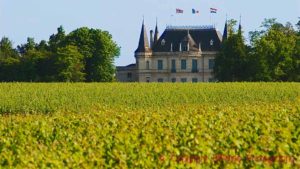
A magnificent region to visit with prestigious châteaux (and wines), history, and luxurious meals. You will enjoy both great wines and delicious French gastronomy on this tour. Learn all about Bordeaux on a wine tour with us.
Every wine lover should visit Bordeaux. It is a must to visit at least once in a wine-lifetime.
- Wine tour to Bordeaux, April 20-24, 2022
- Wine tour to Bordeaux, October 2-6, 2022 (This autumn tour will also be offered in combination with the Champagne tour)
Book now: your wine tour with BKWine!
The Champagne wine tour: big houses and small growers, learn about all the aspects of Champagne
If you want to learn about Champagne, the best way is to go there. We want to give you the whole picture of this famous region, and therefore we will visit both huge and famous Champagne houses and also small independent growers. The big houses drive the markets for champagne but it is the grower’s champagnes that are pushing the frontier for quality.
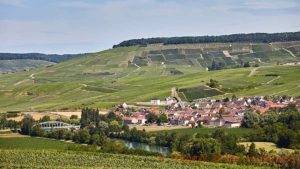
We will taste many styles of champagnes, among them the unusual 100% pinot meunier (delicious!) and zero dosage, the driest champagne (not for the faint-of-heart). We will enjoy some lovely lunches together, with champagne throughout. You will discover that champagne is also a great dinner wine.
- Wine tour to Champagne, May 4-8, 2022
- Wine tour to Champagne, September 28-October 2, 2022 (This autumn tour will also be offered in combination with the Bordeaux tour)
Book now: your wine tour with BKWine!
The Grand Wine Tour to Champagne and Bordeaux: combine the two most famous French wine regions in one tour
You don’t have to choose between Champagne and Bordeaux. We offer you the chance to go to both regions. This Grand Wine Tour is a 9-day tour that includes both these two magnificent, world-renowned wine regions.
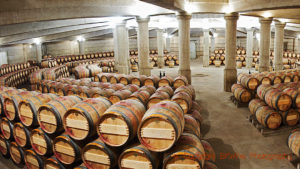
We start with four nights in Reims in Champagne, with its many big Champagne houses and stunning Cathedral. We will dive deep into the bubbly wine and the local gastronomy, guided by a champagne expert. The fast train will take us to Bordeaux, and we will have to readjust our palates to red wines and still white wine (shouldn’t be too difficult). It is a lot of cabernet and merlot, but not only. Have you heard of sauvignon gris?
Don’t miss this unique opportunity to visit the two most famous wine regions in the world in one very enjoyable go.
- Wine tour to Champagne and Bordeaux, September 28 – October 6, 2022
Book now: your wine tour to Champagne-Bordeaux with BKWine!
Argentina and Chile 2023, the wine tour to South Americas biggest wine countries, with great wines
South America has several wine countries, and our tour will take us to the two largest ones, Argentina and Chile, and the two greatest ones. We start with a few days in the city of Buenos Aires before continuing west to the vast wine region of Mendoza, known for its malbec but also several other grape varieties.
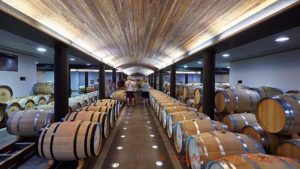
With the Andes in the background, Mendoza is a spectacular wine region. We see more and more vineyards at high altitudes in the quest to preserve the valuable acidity of the wines.
Our bus takes us across the mighty Andes to Chile, an unforgettable journey. We continue across Chile to the Pacific Coast, where we stay in lovely Viña del Mar. We will also visit Casablanca, with its slightly cooler climate, perfect for sauvignon blanc and pinot noir. We go on to the small town of Santa Cruz and the beautiful wine region of Colchagua, known above all for its red wines. We end the tour in the Chilean capital Santiago.
Join us on our wine tour to South America!
- Wine tour to Chile-Argentina, January 16-29, 2023
Book now: your wine tour to Chile-Argentina with BKWine!
South Africa wine tour 2023: A magnificent country for wines and vineyards
It’s easy to have South Africa as your favourite wine country. Many different grape varieties thrive in the southwestern part of the country. Bordeaux grapes have long been popular with the producers. Many of them also look for old vines of cinsault, carignan and grenache.
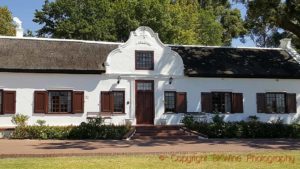
Syrah and pinotage, a crossing between pinot noir and cinsault made in South Africa, are getting more and more sought-after. We meet in beautiful Cape Town and continue to Elgin and Hermanus down on the south coast, to Franschhoek, to Swartland and, finally, to the classic region of Stellenbosch. You will get a thorough insight into what is happening in the wine country of South Africa on the tour.
Of course, we will have time for some sightseeing, such as Table Mountain and the Cape of Good Hope. During our meals together, we get to know the different local cuisines in the country. South Africa is a lovely wine country to explore. South Africa is worth a wine tour!
Discover South Africa on a wine tour with us.
- Wine tour to South Africa, February 8-18, 2023
Book now: your wine tour to South Africa with BKWine!
New Zealand wine tour 2023: A different and surprising New World wine country
Our tour to New Zealand is a wine tour, but we will also discover the country. We start in Auckland, the country’s largest city, and then we go on a discovery tour by bus (and boat) all the way down to Queenstown on the South Island.
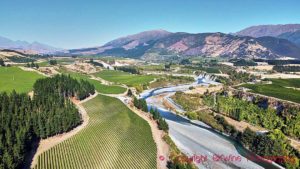
We will visit wine regions such as Wairarapa, Hawke’s Bay, Marlborough and Central Otago. In total, we visit around 20 producers. You will also have time to relax and enjoy the scenery and the small (and larger) towns we pass on our way.
The landscape is special and sometimes spectacular, as in Rotorua with its geysers and hot springs, Central Otago with its high mountains and Lake Tekapo with its stunning blue colour. We visit Kaikoura, known for its seafood, which we, of course, take the opportunity to taste. We make a short visit to the beautiful capital Wellington, and we stay three nights in small but lively Queenstown.
Join us on our New Zealand tour, a great adventure.
- Wine tour to New Zealand, March 15-30, 2023






